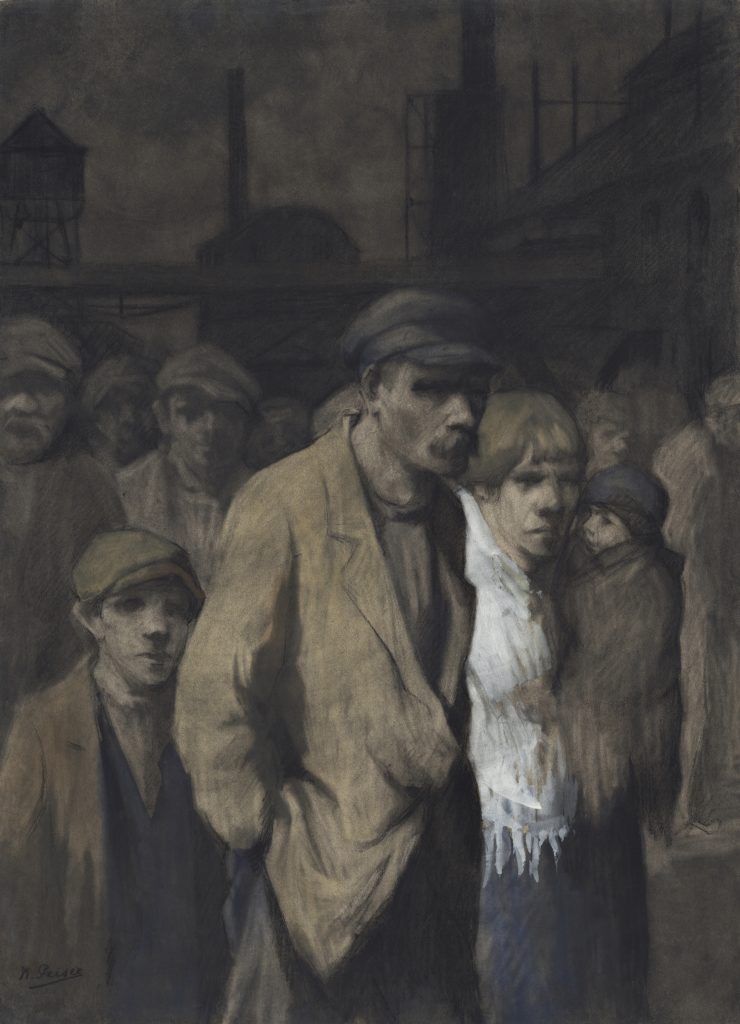Travailleurs, le Soir
Workers, the Evening
Pastel and white highlights on paper, ca. 1914-18
Signed lower left K. Peiser
Size
820 x 590 mm
Provenance
Private collection, Belgium
Exhibition
A striking pastel by the Belgian artist Kurt Peiser, illustrating his most iconic subject : the depiction the workers’ hard life, the existence of the poorest communities of Brussels and Antwerp, and the overall misery of these characters. Following the example of Constantin Meunier, Peiser became a key figure of Belgian realism, and social representation. If he started his career as a marine painter, from 1910 his main interest was human condition, and the struggle of the workers and prostitutes. His artworks are so powerful, and authentic, that he was put on trial for “atteinte à la morale” when he exhibited some of his art in Antwerp in 1914. With a talent for portraying these melancholic silhouettes, giving them an elegant stature while surrounding them in a dark crowd : The individual struggle and the heaviness of the masses.
Belgian author Louis-Paul Boon, editor of the communist paper De Roode Vaan, wrote about the artist : « Nous sortions à peine de l’école et, avec nos yeux éblouis d’adolescents, nous commencions à peine à remarquer que la vie, la véritable vie, était tout à fait différente de celle que nous avaient présentées nos professeurs. C’est alors que vint Peiser et qu’il fit s’écrouler devant nos yeux les rideaux de ce monde de théâtre. Dans ses tableaux, il nous faisait voir une vie de peine et de souffrance. Il exprimait sans retenue une accusation que nous ne commencions à murmurer qu’avec hésitation. C’étaient les équipes de nuit, les morts à la tâche, les chevaux mourants, les filles des plaisirs misérables, qui suscitaient notre compassion. À nos yeux, Peiser était un géant, un homme qui portait bien haut l’étendard de la révolte. [1]»
[We had just finished our secondary education and with our still dazzled young eyes of teenagers, we begun to note that life, the real life ,was completely different from what we were presented by our teachers. Then came Peiser who made to crumble the curtains of this theatrical world. In his paintings, he made us see a life of pain and suffering. He expressed without restrain a charge that we started to murmur with hesitation. It was the nightshifts, the casualties at work, the dying horses, the women of miserable pleasures that stimulated our compassion. To our eyes, Peiser was a giant, a men who bared high the standard of the revolt.]
[1] L.-P. Boon, De Roode Vaan, 2 février 1946.







